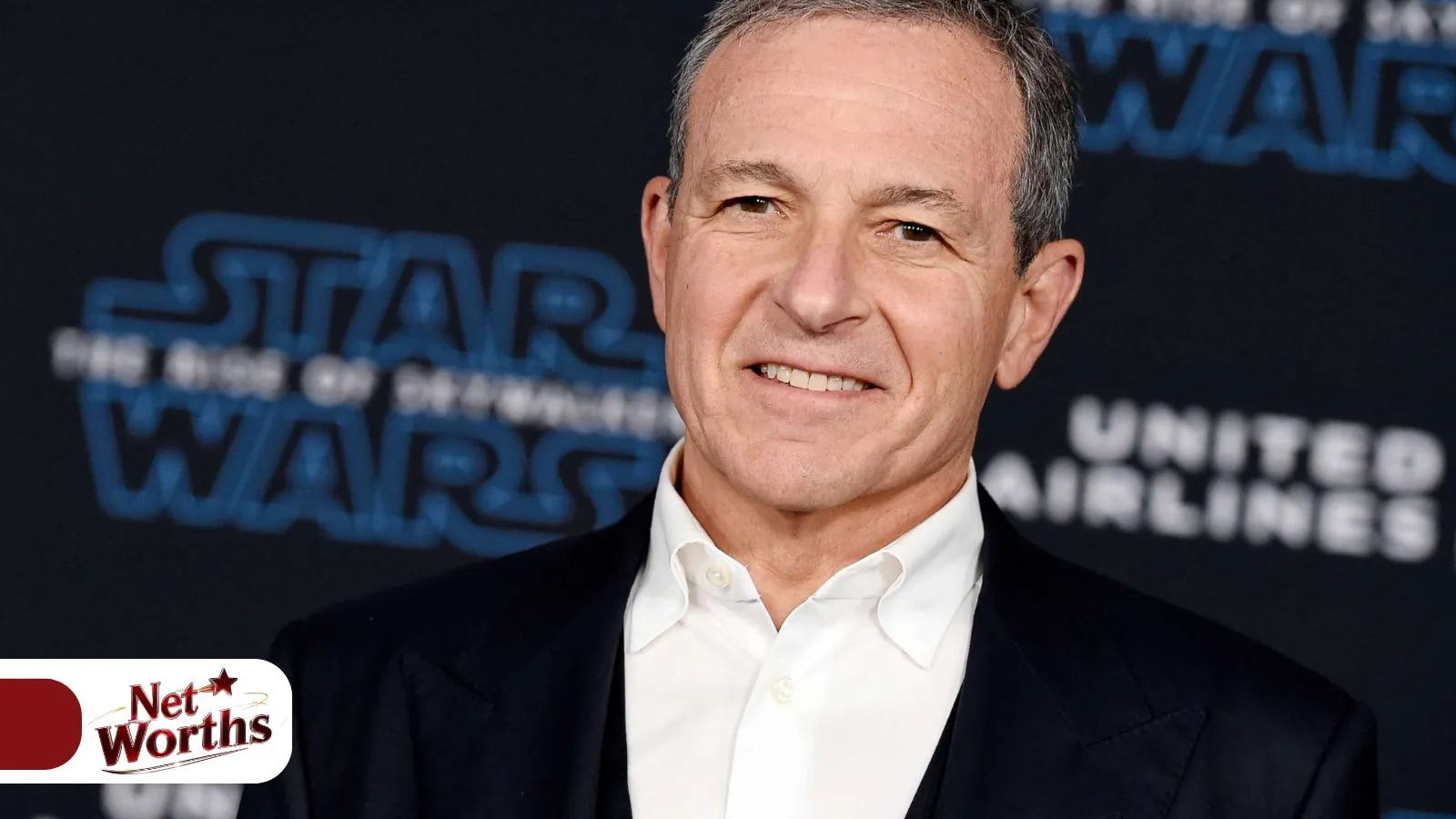Robert Iger, often known as Bob Iger, is one of the most influential figures in the entertainment industry. As the former CEO of The Walt Disney Company, Iger’s strategic vision and leadership transformed Disney into a global powerhouse. His tenure saw the acquisition of major entertainment brands, the expansion of Disney’s media empire, and the successful launch of Disney+, among other achievements. This in-depth profile explores Iger’s life, career, and the legacy he has left in the world of entertainment.
Early Life and Education
Childhood and Family Background
- Birthdate: February 10, 1951
- Birthplace: Oceanside, New York, USA
- Family Background: Robert Allen Iger was born to a Jewish family in Oceanside, New York. His father, Arthur Iger, was a World War II Navy veteran who worked as a marketing executive, and his mother, Mimi Iger, was a schoolteacher. Growing up in a middle-class family, Iger developed an early interest in media and entertainment.
Education
- High School: Iger attended Oceanside High School, where he was known for his academic diligence and interest in literature and history.
- College: He went on to attend Ithaca College in New York, where he graduated with a Bachelor of Science degree in Television and Radio in 1973. During his time at Ithaca, Iger honed his skills in media production and developed a deep understanding of the entertainment industry.
Early Career in Media
Entry into Television
- First Job: After graduating from college, Iger began his career at the American Broadcasting Company (ABC) in 1974 as a studio supervisor. His job involved overseeing various production tasks, from handling cameras to managing the set. This role gave him a solid foundation in television production and operations.
- Rise Through the Ranks: Over the next two decades, Iger worked his way up through various positions at ABC, gaining experience in different facets of the business. He served as the head of ABC’s daytime programming division, where he was responsible for overseeing popular shows such as “General Hospital” and “All My Children.”
Becoming President of ABC Entertainment
- Leadership at ABC: In 1989, Iger was appointed as the President of ABC Entertainment, where he was tasked with revitalizing the network’s prime-time lineup. Under his leadership, ABC launched hit shows such as “Twin Peaks” and “America’s Funniest Home Videos,” which helped improve the network’s ratings and profitability.
- Transition to Capital Cities/ABC: In 1994, when Capital Cities Communications merged with ABC, Iger was named President and Chief Operating Officer of the newly formed Capital Cities/ABC, Inc. His success in this role caught the attention of Disney, which acquired Capital Cities/ABC in 1995.
Joining The Walt Disney Company
Early Years at Disney
- President of Disney’s International Operations: After Disney’s acquisition of ABC, Iger was appointed as the Chairman of Disney’s International Operations. In this role, he was responsible for overseeing Disney’s global expansion and ensuring that the company’s content resonated with audiences worldwide.
- Promoted to COO: In 2000, Iger was promoted to President and Chief Operating Officer (COO) of The Walt Disney Company, making him the second-in-command to then-CEO Michael Eisner. This role allowed Iger to gain deeper insight into Disney’s diverse business operations, including its theme parks, media networks, and consumer products.
Becoming CEO of Disney
- Appointment as CEO: In 2005, following a period of internal turmoil at Disney, Iger was named CEO, succeeding Michael Eisner. His appointment came at a critical time when Disney was facing challenges, including declining network ratings, stagnation in its animation studios, and the need to adapt to a rapidly changing media landscape.
- Strategic Vision: From the outset, Iger’s vision for Disney was clear: to create high-quality content, embrace technological innovation, and expand the company’s global footprint. He recognized the importance of storytelling and intellectual property in driving Disney’s success and set out to acquire the best content creators in the industry.
Transformative Acquisitions
Pixar Animation Studios
- Acquisition of Pixar: One of Iger’s first major moves as CEO was the acquisition of Pixar Animation Studios in 2006 for $7.4 billion. This deal marked the beginning of a new era for Disney animation, as Pixar’s creative talent and technological prowess reinvigorated Disney’s animated film division.
- Partnership with Steve Jobs: The acquisition also brought Steve Jobs, who was the largest shareholder in Pixar, onto Disney’s board of directors. Iger’s ability to negotiate with Jobs, a notoriously tough dealmaker, showcased his diplomatic skills and vision for the future of Disney.
Marvel Entertainment
- Marvel Purchase: In 2009, Iger orchestrated the $4 billion acquisition of Marvel Entertainment, adding a vast library of iconic characters, including Spider-Man, Iron Man, and the Avengers, to Disney’s portfolio. This acquisition was pivotal in establishing Disney as a leader in the superhero genre and laid the foundation for the Marvel Cinematic Universe (MCU), one of the most successful film franchises in history.
- Integration and Success: Iger’s approach to integrating Marvel was to allow its creative team to operate independently while leveraging Disney’s marketing and distribution power. This strategy proved highly successful, with Marvel films consistently breaking box office records.
Lucasfilm and Star Wars
- Acquisition of Lucasfilm: In 2012, Iger secured another major acquisition with the purchase of Lucasfilm for $4.05 billion. This deal gave Disney control of the Star Wars and Indiana Jones franchises, further expanding its intellectual property empire.
- Reviving Star Wars: Under Disney’s ownership, the Star Wars franchise was revitalized with the release of new films, television series, and merchandise. While some entries were met with mixed reviews, the overall success of the franchise under Disney’s stewardship reaffirmed Iger’s strategy of acquiring and nurturing valuable content.
21st Century Fox
- Massive Deal: In 2019, Iger completed one of the largest acquisitions in media history with Disney’s $71.3 billion purchase of 21st Century Fox. This deal brought iconic properties like “The Simpsons,” “Avatar,” and the X-Men into the Disney fold, and expanded the company’s reach in both television and film.
- Impact on Disney’s Content Library: The acquisition significantly boosted Disney’s content library, positioning the company as a dominant force in the streaming wars and enhancing its ability to compete with rivals like Netflix and Amazon.
Innovation and Expansion
Launch of Disney+
- Entering the Streaming Market: Recognizing the shift towards digital media consumption, Iger spearheaded the development and launch of Disney+, a streaming service that became a central part of Disney’s strategy. Launched in November 2019, Disney+ quickly gained millions of subscribers, offering a vast array of Disney, Pixar, Marvel, Star Wars, and National Geographic content.
- Content Strategy: Disney+ was built on the foundation of high-quality, exclusive content, including new series and films from Disney’s major franchises. The success of Disney+ underscored Iger’s foresight in recognizing the importance of direct-to-consumer services in the evolving media landscape.
Expansion of Theme Parks
- Global Growth: Under Iger’s leadership, Disney expanded its theme park operations globally, with significant investments in Shanghai Disneyland, which opened in 2016. This park became a symbol of Disney’s commitment to international markets and its ability to adapt its brand to different cultural contexts.
- Enhancements to Existing Parks: Iger also oversaw major expansions and updates to existing parks, including the addition of Star Wars: Galaxy’s Edge at Disneyland and Walt Disney World. These investments ensured that Disney’s theme parks remained top destinations for visitors worldwide.
Leadership Style and Legacy
Strategic Vision
- Focus on Content: Iger’s leadership was defined by his belief in the power of great storytelling and high-quality content. His strategic acquisitions were all aimed at acquiring the best content creators and intellectual property to fuel Disney’s growth.
- Emphasis on Technology: Iger understood the importance of technology in the future of entertainment. Whether it was through the launch of Disney+ or the adoption of new technologies in film production and distribution, Iger positioned Disney at the forefront of innovation.
Leadership Qualities
- Diplomatic and Collaborative: Iger was known for his diplomatic approach to leadership, fostering strong relationships with creative talents, business partners, and even competitors. His ability to collaborate effectively was key to Disney’s successful acquisitions and partnerships.
- Risk-Taker: Iger was not afraid to take calculated risks, whether it was acquiring major companies or investing in new technologies. His willingness to bet on the future paid off handsomely for Disney and its shareholders.
Awards and Recognition
- Accolades: Over his career, Iger has received numerous awards and honors, including being named “Businessperson of the Year” by Time magazine and “CEO of the Year” by Chief Executive magazine. His leadership has been widely praised by industry peers and business analysts alike.
- Industry Impact: Iger’s influence on the entertainment industry is profound. His decisions have shaped the landscape of media and entertainment, from the rise of streaming services to the dominance of superhero films at the box office.
Conclusion:
Robert Iger’s tenure as CEO of The Walt Disney Company is marked by visionary leadership, strategic acquisitions, and a deep understanding of the entertainment industry. His ability to foresee trends, invest in high-quality content, and embrace technological innovation transformed Disney into the global entertainment juggernaut it is today. Even after stepping down as CEO, Iger’s legacy continues to influence the direction of the company and the broader media landscape.
As Disney moves forward in a rapidly changing world, the foundations laid by Robert Iger will undoubtedly continue to guide its path to success. His story is a testament to the power of vision, leadership, and the relentless pursuit of excellence in the world of entertainment.










